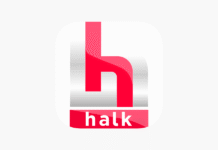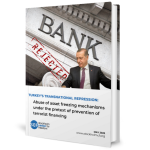
On March 4, 2016, exactly two years ago today, hundreds of riot police fired rubber bullets and gassed loyal readers of Turkey’s best-selling daily when they stood vigil on the sidewalk across from the newspaper’s offices to peacefully protest the news of an impending unlawful takeover of the Zaman newspaper.
Without even bothering to warn the protesters, police embarked on a violent operation against many people, including women and children who had broken no laws. The horrible picture of a woman being dragged on the ground with blood all over her face is permanently impressed in the bitter memories of many who watched the terrible saga as it was unfolding on live TV.
400 RIOT AND ANTI-TERROR POLICE STORMED THE ZAMAN HEADQUARTERS
Shortly afterwards, some 400 riot and anti-terror police stormed the offices of Zaman, ransacking the place, going through editorial rooms and kicking out the reporters and editors from the building although there was no warrant authorizing the police to take such action. The excessive teargas even filled the inside of the newspaper building, making it very difficult for many journalists to breathe as masked police officers were running wild inside.
Zaman, Turkey’s highest circulating daily that enjoyed some 1.2 million copies sold daily, had been systematically targeted by the Turkish government and viciously attacked by then-Prime Minister and now autocratic President Recep Tayyip Erdoğan in the aftermath of twin corruption investigations in December 2013 that exposed a mass corruption scandal, incriminating Erdoğan’s family members and inner circle. The Zaman daily was one of the few media outlets courageous enough to publish the damning details of the investigation file that forced four ministers to resign.
The investigation revealed how billions of dollars were funneled by Iranian sanction-buster and gold trader Reza Zarrab through Turkey to circumvent sanctions on Iranian regime in exchange for millions of dollars in bribes. The probe also uncovered how Erdoğan secretly met with alleged al-Qaeda financier and Saudi national Yasin al-Qadi, who was on the UN and US sanctions lists at the time. He was paraded into the country by Erdoğan’s protective detail despite a travel ban and enjoyed access to the highest echelons of the Turkish government.
Erdoğan rushed to hush up the investigations by dismissing all members of the security forces and judiciary who had taken part in the graft probes and jailing them afterwards on trumped-up charges. In the meantime, he also started targeting Zaman for covering serious allegations made in the investigation files. He labeled the investigation a “coup” against his government and scapegoated the Gülen movement, a civic group that was inspired by US-based Muslim intellectual Fethullah Gülen, for his troubles. Zaman, seen as affiliated with Gülen, was the prime target.
ERDOĞAN EXERTS PRESSURE ON ZAMAN FOR MONTHS
Erdoğan started exerting pressure on Zaman with the hope that the paper would change its editorial stand on corruption, stop publishing articles that revealed kickbacks in the government and halt its investigative reporting that exposed the Erdoğan government’s links to armed radical groups in Syria.
At a political rally in Ankara on March 22, 2014, Erdoğan called on the public to stop buying the Zaman newspaper. Zaman reporters were denied access to press briefings and faced accreditation restrictions even for international events that were being hosted by Turkey. Erdoğan personally harassed and attacked Zaman reporters in the few press briefings that Zaman journalists were allowed into.
ZAMAN ADVERTISERS WERE THREATENED, JOURNALISTS WERE INUNDATED WITH COURT CASES
Coupled with that, the government put pressure on advertisers, threatening them with audits and financial penalties if they continued to place ads in the nation’s largest daily. All advertising given to the paper was effectively blocked, from both the state and the private sector.
Zaman employees and reporters were systematically being inundated by hundreds of court cases brought against them. At the time of the takeover by the riot police, there were 323 court cases pending against the paper alone. Of those, 53 were personally launched by Erdoğan. There were over 500 court orders to cease publication of some news stories and refute them. The government also instigated an extensive tax audit on the newspaper.
Just to send a chilling message of fear to media outlets in Turkey, Erdoğan orchestrated the arrest of Zaman Editor-in-Chief Ekrem Dumanlı around the time of the first anniversary of the corruption investigations. The police came in and detained Dumanlı in his office on charges of smearing an al-Qaeda-affiliated group called Tahşiyeciler by means of two op-ed pieces written by contributors to Zaman and one news story that published in the newspaper. Dumanlı remained in detention for four days before his release pending trial. In a bizarre twist, Dumanlı was accused of supporting the investigation into an al-Qaeda offshoot through publishing critical articles in Zaman.
ERDOĞAN’S PARTISAN TRUSTEES SEIZED THE PAPER
Frivolous lawsuits and financial pressure by the government did not work out the way Erdoğan planned in changing the critical editorial stance of Zaman, but it had taken a toll on not only advertisers but also on subscribers. The circulation of the paper fell from 1,219,354 in December 2013 to 954,335 in December 2014. It further dropped to 693,695 in December 2015 but remained the leading national newspaper by quite a margin to the second largest mainstream daily, Hürriyet. By then, the government realized intimidation tactics would not work and decided to take over the company altogether on false charges on March 4, 2016.
The government secured the order for a corporate takeover from a court that was created by the Erdoğan government as a special project court to crack down on critics in 2014. The order did not cover any interference into the editorial side as it was a temporary change of the board of directors until the trial was finalized. Yet the government care-takers immediately dismissed senior editors including Editor-in-Chief Abdülhamit Bilici, who had replaced Dumanlı only few months earlier. The paper’s editorial stance was changed 180 degrees overnight, by turning it into yet another mouthpiece and propaganda media outlet for the government.
Speaking at a public rally in Burdur on March 11, 2016, a jubilant Erdoğan referred to the confiscation of the Zaman newspaper and the police officers’ forcibly entering the newspaper’s headquarters, saying: “We have said that we would enter their lairs. Have we done what we said? We will continue to enter their dens.”
Government-appointed trustees were carefully selected among henchmen of the AKP government. Metin İlhan was the secretary general of the UETD, an AKP-backed NGO operating in Europe. Tahsin Kaplan was a lawyer known for his sympathetic views towards the Iranian revolution, and Sezai Şengönül was an unknown poet. None of them had any experience in running a large media company like Zaman.
TRUSTEES STARTED WORK BY DESTROYING ZAMAN’S ARCHIVE
One of the first steps taken by the government-appointed trustees was to erase the entire news archive of the paper, taking down the website and removing all the published articles that went back some 30 years. The news that was deemed critical of the government was no longer accessible. The caretakers also fired over 200 journalists without severance pay or compensation. The remaining skeleton crew was systematically mobbed and harassed by security forces who were constantly present in the building.
Along with Zaman, Today’s Zaman, an English-language daily; Aksiyon, a weekly news magazine; Cihan, the nation’s largest private news agency; Turkish Review, bimonthly English journal on politics and foreign policy; Irmak TV, a TV channel broadcasting cultural content; and Zaman Kurdish and Zaman Arabic, websites publishing news in Kurdish and Arabic, were also taken over by the government. A distribution and delivery company, Cihan Medya Dağıtım, was also confiscated, and over 1,200 people were immediately fired.
With all its columnists dismissed and its editorial independence gone, the sales of the paper hit the rock bottom, falling to 5,275 at the end of March.
Zaman was the second media outlet that was taken over by the government. Erdoğan also orchestrated the seizure of the third largest media conglomerate, the İpek Media Group, on Sept.1, 2015 by taking over two dailies, two national TV networks and one radio station.
ZAMAN DAILY AND ITS AFFILIATES WERE CLOSED RIGHT AFTER THE JULY 15 COUP ATTEMPT
After a failed coup attempt on July 15, 2016 183 media outlets were closed down by government decree. Zaman was only one of them. The Yarına Bakış and Yeni Hayat newspapers and the Muhabir Ajans news agency, established by journalists who were illegally fired by government-appointed trustees, were also shut down in the aftermath of the failed coup.
Sixty former employees of the Zaman newspaper are currently behind bars in Turkey, and scores of them are in exile or remain at large in order to escape the relentless persecution the government has been pursuing against journalists. The shareholders’ attempt to take the case to the Constitutional Court has failed as well. At present, work is under way to bring the case to the European Court of Human Rights.
Turkey is the biggest jailer of journalists in the world. The most recent figures documented by SCF show that 240 journalists and media workers were in jail as of February 22, 2018, most in pretrial detention. Of those in prison, 205 were under arrest pending trial, while only 35 journalists have been convicted and are serving their time. Detention warrants are outstanding for 140 journalists who are living in exile or remain at large in Turkey.
Detaining tens of thousands of people over alleged links to the Gülen movement, the government also closed down more than 180 media outlets after the controversial coup attempt.
PHOTO GALLERY































